The requirements of the above standards are essentially the same. In the following any significant difference in the contents of these standards will be stated; minor differences will be ignored.
The standards detail the minimum requirements for compliance, eg details of such as: manufacture dimensions marking material composition testing procedure mechanical properties certification.
The features by which a chain may be identified are:
The size of the chain refers to the nominal diameter of the material from which the link is made. The standards specify the maximum and minimum limits of the diameter of the material for every nominal chain size. These limits on material size are roughly ±5 percent of the normal diameter.
To obtain the chain size, the material from which the link is made should be measured:
The letters L, M, P, S and T are used to designate the strength grade of the chain. The letter designating the particular strength grade must be stamped or embossed on either every twentieth link or every 1 metre of chain, whichever is the lesser.
The marking must not:
The following marks must be legibly and permanently displayed either on the links of each manufactured chain length or on metal tabs which are permanently attached to each end of each manufactured chain length:
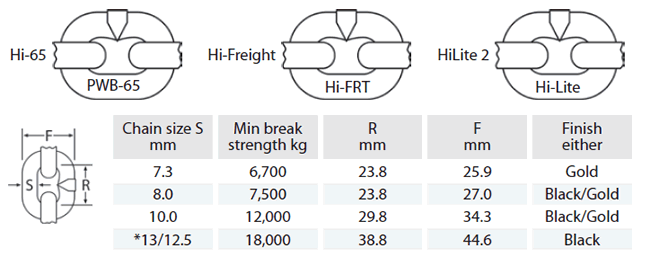 PWB Chain markings and specifications – pre 1997
PWB Chain markings and specifications – pre 1997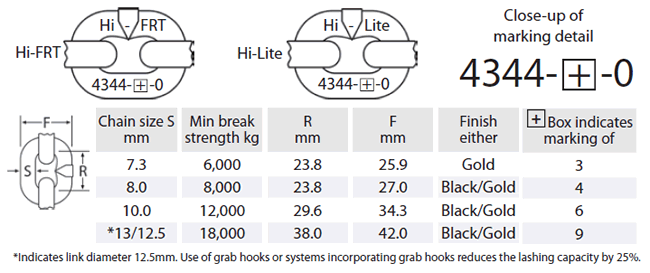 PWB AS/NZS4344:1995 Chain markings and specifications – 97/98 onwards
PWB AS/NZS4344:1995 Chain markings and specifications – 97/98 onwardsThe chain tables are reprinted by permission from the Lifting Equipment Engineers New Zealand Inc.
Note: With respect to the Minimum breaking strength and elongation of chain table:
Minimum breaking strength and elongation of chain table
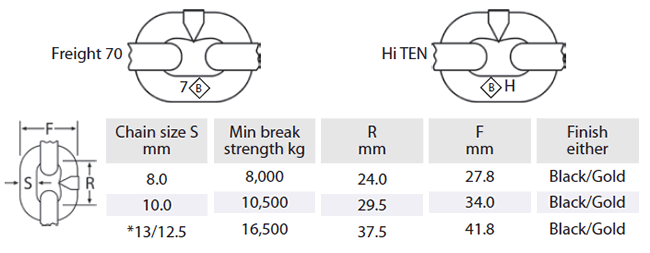 Bradlink chain markings and specifications
Bradlink chain markings and specifications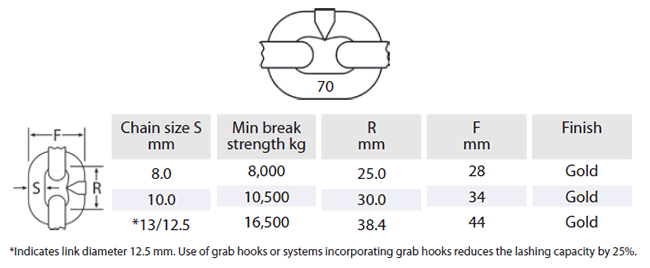 Serafini chain markings and specifications
Serafini chain markings and specifications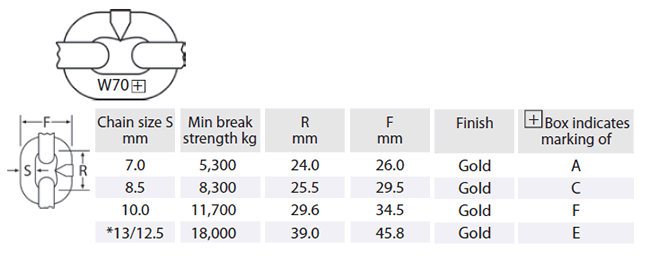 Wiessenfel chain markings and specifications
Wiessenfel chain markings and specifications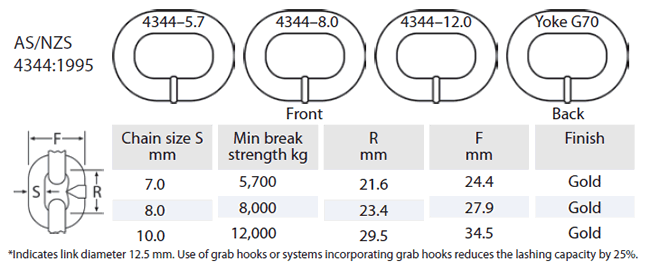 Yoke grade 70 transport chain markings and specifications
Yoke grade 70 transport chain markings and specifications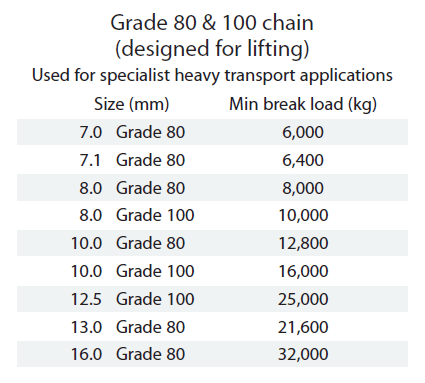
Grade 80 and 100 chain (designed for heavy lifting). used for specialist heavy transport applications.
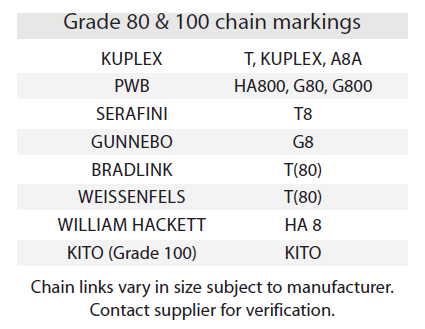 Grade 80 and 100 chain markings.
Grade 80 and 100 chain markings.